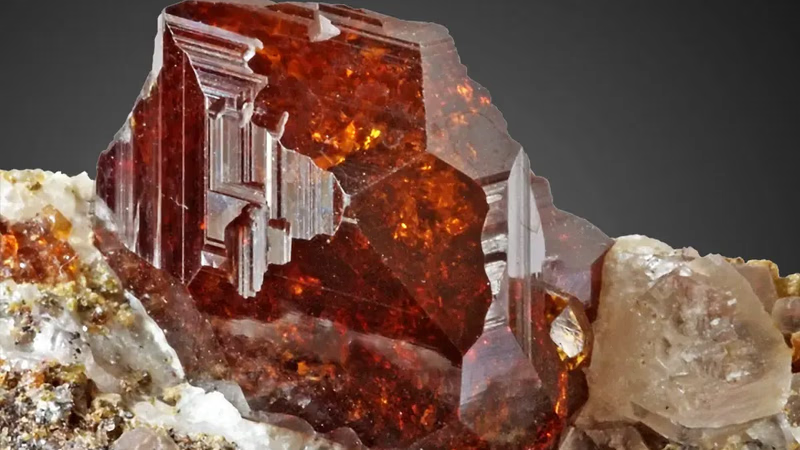
Identifying spinel vs ruby: key differences in color and value.
Both spinel and ruby can occur in shades of red, but there are subtle differences. Ruby tends to have a slightly deeper, intense red color with hints of blue, while spinel can exhibit a broader range of red hues, including orangey-red, purplish-red, or pinkish-red. Refractive index (RI) is a measure of how light bends when it enters a gemstone. Ruby typically has a higher RI than spinel. You can use a refractometer, a tool commonly found in gemological laboratories, to measure the RI and compare it to reference values. Ruby often exhibits a strong red fluorescence under ultraviolet (UV) light, while spinel generally displays little to no fluorescence. This property can be observed using a UV light source.
A gem dealer should possess knowledge about identifying and distinguishing spinel from ruby because these gemstones have significant differences in value, rarity, and desirability. By accurately identifying and distinguishing spinel from ruby, a gem dealer can provide accurate information to potential buyers and ensure transparency in gemstone transactions. This knowledge allows them to assess the quality, rarity, and value of each gemstone accurately, which is essential for pricing, marketing, and customer satisfaction.
Rubies and red spinels are commonly found in mines. Due to their great similarity, the two minerals were not separated from each other until recent years, so most red pearls were considered rubies in ancient times. In 1783, a French mineralogist named Louis Rom de lisle introduced pearl as a separate mineral from ruby. From a chemical point of view, ruby is a combination of aluminum oxide corundum (AL203) and magnesium aluminum oxide (MgAL204), while rubies are in a \"hexagonal crystal\" hexagonal crystal system. They form \"Trigonal\", forming spinel gemstones in the isometric crystal system, \"Cubic cube\" and \"Octahedral\".
The density and light emission index of rubies are slightly higher than those of rubies, but this difference is so significant that it distinguishes the two seemingly similar stones. In fact, differences in hardness and weight helped ancient gemstone carvers in Sri Lanka, South of Asia and Burma understand the difference between rubies and spinels before gemology was introduced to the world as a science. Ruby is one of the most highly valued gemstones, often commanding higher prices compared to spinel. The quality, size, and origin of a ruby can greatly influence its value. Spinel, while still a desirable gemstone, generally has a lower market value in comparison.
Ruby is considered one of the rarest gemstones, especially fine-quality rubies that exhibit intense red hues without any undesirable undertones. True rubies of exceptional quality are relatively scarce, which contributes to their high value. Spinel, while not as rare as ruby, can still be found in varying qualities and colors. The market demand for rubies is typically higher due to their historical significance, cultural associations, and the enduring popularity of red gemstones. Ruby is also one of the traditional birthstones for July. Spinel has gained recognition and appreciation in recent years but generally has a lower demand compared to ruby.
Both gemstones can contain inclusions, but the type and character of the inclusions may differ. Ruby commonly shows needle-like inclusions known as rutile silk, while spinel may have characteristic octahedral crystal inclusions or fine growth lines. Ruby is one of the hardest gemstones, ranking 9 on the Mohs scale. Spinel is also relatively hard, but it ranks slightly lower at 8. You can perform a hardness test using known materials of different hardness levels to compare scratch resistance.
-

Spinel and ruby share similar red hues but differ in several key characteristics. Rubies typically exhibit a deeper red color with blue undertones, while spinels can range from orangey-red to pinkish-red. The refractive index (RI) is a crucial factor in distinguishing these gemstones, with rubies having a higher RI. Under UV light, rubies show strong fluorescence, whereas spinels display minimal fluorescence. Accurate identification is essential for gem dealers to provide transparency and ensure fair pricing based on quality and rarity. Historically, the two stones were often confused until the late 18th century when they were classified separately. Chemically, rubies are aluminum oxide corundum, while spinels are magnesium aluminum oxide. Rubies are rarer and more valuable than spinels due to their historical significance and market demand.
The quality of rubies can significantly influence their price, making them one of the most sought-after gemstones. Spinel has gained popularity recently but still holds a lower market value compared to ruby. Both gemstones may contain inclusions; however, rubies often have needle-like inclusions known as rutile silk, while spinels may show octahedral crystal inclusions. In terms of hardness, rubies rank 9 on the Mohs scale compared to spinel"s ranking of 8. "
-
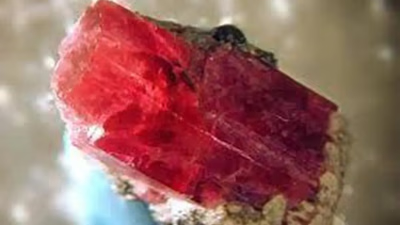
Identifying artificial spinel gemstones involves several methods that highlight their differences from natural counterparts. Visual examination is crucial; look for unusual colors or synthetic growth patterns using a jeweler"s loupe or microscope. The refractive index (RI) is another key indicator, with natural spinel typically ranging from 1. 712 to 1. 736, while synthetic varieties may have a slightly higher RI. Advanced testing techniques, such as spectroscopy and X-ray diffraction, can provide definitive identification of synthetic spinel. Fluorescence tests reveal that natural spinels show weak fluorescence under UV light, whereas synthetic versions often exhibit strong fluorescence in various colors. Additionally, examining the gemstone under a microscope can reveal unique patterns and inclusions indicative of artificial production methods.
Natural spinels react poorly to magnets due to their iron content, while synthetic samples do not react at all. Price can also be a telltale sign; synthetic spinels are generally cheaper than natural ones and often appear glassy in texture. To ensure authenticity, purchasing gemstones with valid gem certificates is recommended. "
-
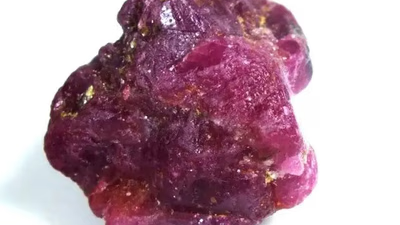
Spinel prices are influenced by supply and demand dynamics, quality, and market conditions. Limited availability or high demand for specific colors can drive prices up, while excess supply may lead to price drops. The quality of spinel, including color, clarity, size, and cut, plays a crucial role in determining its value. Rare colors and exceptional qualities from renowned sources like Myanmar can command premium prices. Economic factors, geopolitical situations, and global trends also impact market stability and consumer confidence. For instance, fine-quality spinels can range from $200 to $500 per carat for smaller sizes, while larger specimens with rare colors may reach up to $10,000 per carat. The treatment status of spinel affects its desirability; untreated stones are generally more valuable than treated ones. Fashion trends and celebrity endorsements can further influence demand and pricing.
The spinel sales market varies regionally across different segments such as high-end jewelry or wholesale markets. To navigate this complex landscape effectively, consulting industry publications and reputable dealers is essential for accurate pricing assessments.
-
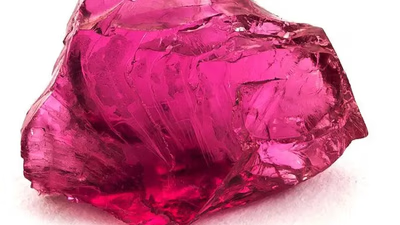
Spinel is a durable gemstone known for its vibrant colors, including red, pink, blue, and black. Often confused with rubies and sapphires, spinel has historical significance, with notable pieces like the "Black Prince"s Ruby" actually being spinels. Its affordability and luxurious appeal make it a popular choice in jewelry. Spinel"s hardness of 8 on the Mohs scale ensures it is suitable for everyday wear, while its excellent transparency enhances its brilliance. Various types of spinel exist, each with unique properties based on their geographic origin. For instance, cinnamon spinel is found in California and Sri Lanka, while green spinel can be confused with emeralds due to their similarities. The market offers a wide range of spinel gemstones that can be cut into various shapes for jewelry making. Spinel"s rich history and diverse color palette contribute to its growing popularity among jewelers and consumers alike. "
-
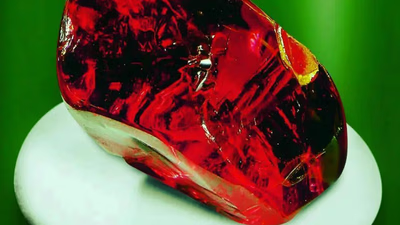
Spinel is believed to influence both the body and mind, primarily through metaphysical practices rather than scientific validation. Advocates claim that spinel can enhance physical vitality, support recovery, and boost energy levels. It is also thought to aid in emotional healing by helping individuals release past traumas and negative emotions. Specific benefits attributed to black spinel include promoting clarity of mind, reducing headaches, and enhancing sexual power. Additionally, it is said to improve heart health and prevent various diseases. On a mental level, spinel is associated with clarity, focus, and creativity, helping users overcome confusion and enhance problem-solving skills. Different colors of spinel are believed to have unique effects; for example, red spinel may increase passion while blue spinel promotes calmness. Furthermore, spinel is regarded as a protective stone that shields against negativity and fosters emotional balance.
While many people find personal value in these beliefs about spinel"s properties, it is crucial to remember that they should not replace professional medical advice or treatment. "
-
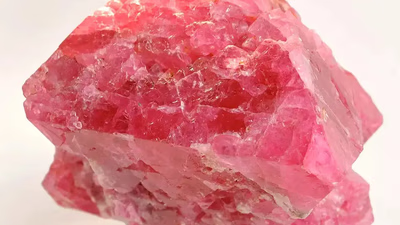
Myanmar, Sri Lanka, Thailand, and Tajikistan are key players in the global spinel market. The Mogok region in Myanmar is particularly famous for high-quality spinel, including the renowned "Mogok Ruby. " Sri Lanka"s Ratnapura district is another significant source, known for its diverse color range. Thailand"s Bo Rai and Chanthaburi regions contribute to the gemstone trade as well. Spinel mining has also gained traction in Vietnam since the 1990s, especially around Luc Yen. Tanzania is notable for its vibrant red-pink spinels found in Morogoro County and Tunduru region. The Badakhshan Spinel mine in Tajikistan holds historical significance and produces both red and pink spinels. The availability of spinel can fluctuate due to new discoveries or depletion of existing deposits, making it essential to consult current sources for accurate information on mining operations.
Countries like Afghanistan, Nepal, Australia, and Madagascar also have notable spinel deposits. Overall, the global landscape of spinel mining is dynamic and influenced by various regional factors.






